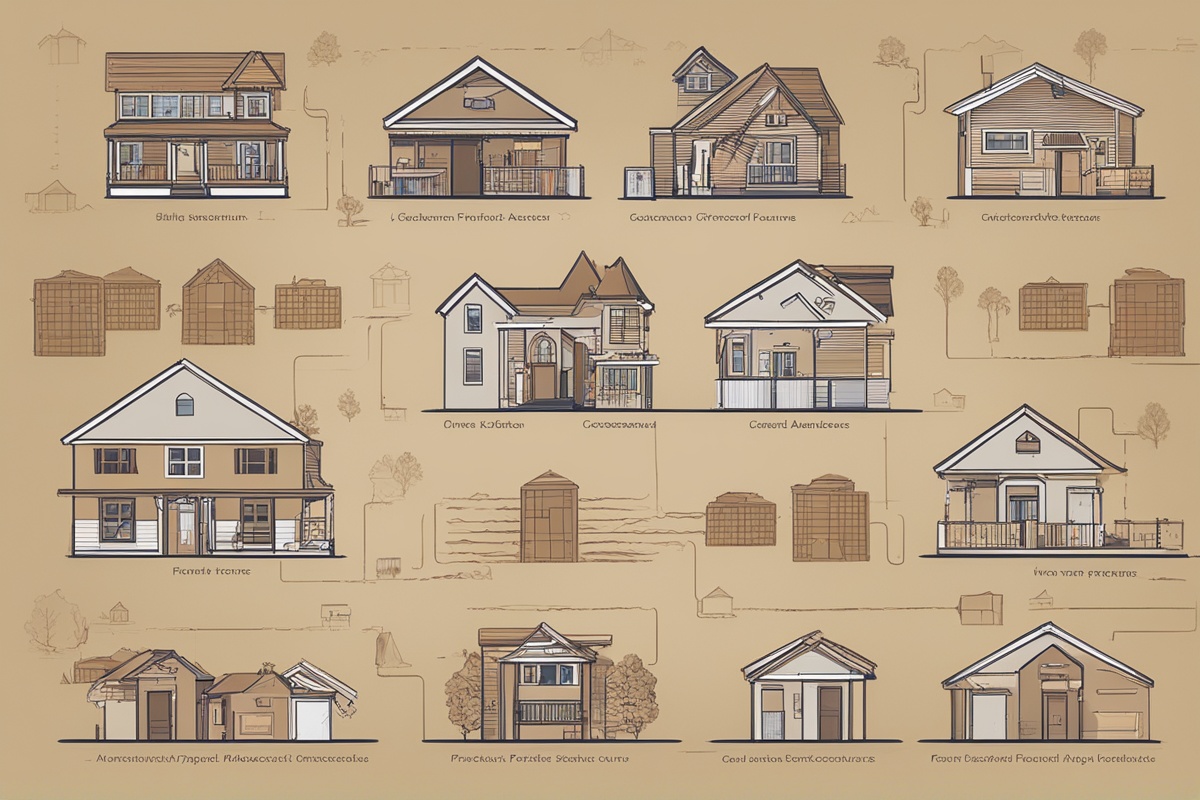Foreclosure is a legal process that occurs when a homeowner fails to make mortgage payments, leading to the lender taking possession of the property. It can be a complex and emotionally challenging ordeal, but understanding different foreclosure processes can help homeowners and potential buyers navigate this difficult situation. This post will dive deep into the various types of foreclosure processes, shedding light on how they work, their implications, and what options might be available to those facing foreclosure.
What Is Foreclosure and Why Does It Happen?
Foreclosure is the legal mechanism by which a lender reclaims a property due to the borrower’s failure to meet the terms of the mortgage agreement, typically by missing payments. This process is often a last resort for lenders, as they would prefer to work with borrowers to avoid the costly and time-consuming process of foreclosure. However, when payments are consistently missed—often after 90 to 120 days—lenders may initiate foreclosure proceedings to recover their investment.
Understanding different foreclosure processes is critical because the type of foreclosure can impact the timeline, the homeowner’s rights, and the potential for redemption or negotiation. Foreclosure can result from financial hardship, job loss, medical emergencies, or poor financial planning. Knowing the root causes can help homeowners take proactive steps to avoid reaching this point, such as seeking loan modifications or other assistance programs.
Judicial Foreclosure: A Court-Supervised Process
Judicial foreclosure is a process that requires court intervention and is common in states that follow a judicial foreclosure system. In this type of foreclosure, the lender must file a lawsuit against the homeowner to obtain a court order to foreclose on the property. This process is often slower because it involves legal proceedings, but it provides homeowners with more opportunities to contest the foreclosure or negotiate with the lender.
During a judicial foreclosure, the court oversees the process to ensure fairness. Homeowners are served with a notice of the lawsuit and have the chance to respond or defend themselves. If the court rules in favor of the lender, the property is typically sold at a public auction. Understanding different foreclosure processes like judicial foreclosure is essential, especially in states where this is the primary method, as it may offer more time to explore alternatives like loan modifications or short sales. For more on avoiding foreclosure, check out our guide on Tips to Avoid Foreclosure.
Non-Judicial Foreclosure: A Faster, Lender-Driven Approach
Non-judicial foreclosure, also known as a power of sale foreclosure, does not involve the court system and is typically faster than judicial foreclosure. This process is allowed in states where the mortgage or deed of trust includes a “power of sale” clause, giving the lender the authority to sell the property without court approval if the borrower defaults. The lender or a trustee handles the process, following state-specific guidelines and timelines.
Homeowners facing non-judicial foreclosure often receive a notice of default, followed by a notice of sale if the default is not cured within a specified period. Because this process bypasses the courts, it can move quickly, leaving homeowners with less time to act. Understanding different foreclosure processes like non-judicial foreclosure can help homeowners in these states prepare for the tight timelines and seek legal or financial advice promptly. Learn more about protecting your rights in our post on Homeowner Rights During Foreclosure.
Strict Foreclosure: A Rare but Direct Method
Strict foreclosure is a less common type of foreclosure that is only used in a few states, such as Connecticut and Vermont. In this process, the lender files a lawsuit against the homeowner, similar to judicial foreclosure. However, instead of the property being sold at auction, the court sets a deadline for the homeowner to pay the overdue amount. If the homeowner fails to pay by the deadline, ownership of the property is transferred directly to the lender without a sale.
This method can be particularly harsh for homeowners because it eliminates the possibility of recovering any equity through a public auction. Understanding different foreclosure processes like strict foreclosure is crucial for residents of states where this method is practiced, as it underscores the importance of acting quickly to negotiate with the lender or seek legal assistance.
Foreclosure by Possession: An Uncommon Alternative
Foreclosure by possession, also known as peaceful or voluntary foreclosure, occurs when a homeowner willingly surrenders the property to the lender without formal legal proceedings. This is not a common process and is typically initiated by the homeowner as a way to avoid the lengthy and stressful foreclosure process. In some cases, this can be negotiated as a deed in lieu of foreclosure, where the homeowner transfers the property title to the lender in exchange for debt forgiveness.
While this method can help avoid a formal foreclosure record on the homeowner’s credit report, it is not always an option and depends on the lender’s willingness to agree. Understanding different foreclosure processes, including foreclosure by possession, can provide homeowners with alternative paths to resolve their situation with minimal damage. For more on negotiating with lenders, see our article on How to Negotiate with Lenders During Foreclosure.
Key Differences and State-Specific Variations
One of the most important aspects of understanding different foreclosure processes is recognizing that they vary significantly by state. Some states exclusively use judicial foreclosure, while others rely on non-judicial methods. Additionally, state laws dictate timelines, notice requirements, and redemption periods—windows of time after a foreclosure sale during which a homeowner might reclaim their property by paying the outstanding debt.
For instance, in states like California, non-judicial foreclosure is the norm, and the process can be completed in as little as 120 days. In contrast, states like New York follow a judicial foreclosure process that can take over a year due to court backlogs. Homeowners must research their state’s specific laws and processes to better prepare for what lies ahead. Our resource on State-Specific Foreclosure Laws offers a detailed breakdown of these variations.
Disclaimer: The information provided in this post is for general informational purposes only and should not be considered legal or financial advice. Foreclosure laws and processes vary widely by state and individual circumstances. We strongly recommend consulting with a qualified attorney or financial advisor to discuss your specific situation and explore your options. The content on this site does not constitute a guarantee of outcomes and should not be relied upon as a sole source of guidance.
References
- U.S. Department of Housing and Urban Development (HUD) – Avoiding Foreclosure
- Consumer Financial Protection Bureau (CFPB) – What Is Foreclosure?
- Nolo – The Foreclosure Process
- Federal Reserve – Foreclosure Resources
- USA.gov – Foreclosure Help
This content is for informational purposes only and not a substitute for professional advice.





